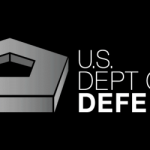Researchers Use Trapped Ions to Demonstrate Quantum Random Walks; Potential for Future Use in Chemistry & Biology Studies

(EurekaAlert) Researchers at the Center for Quantum Information and Quantum Biology at Osaka University used trapped ions to demonstrate the spreading of vibrational quanta as part of a quantum random walk. This work relies on their exquisite control of individual ions using lasers, and can lead to new quantum simulations of biological systems.
Among the very weird features of quantum mechanics–the laws of physics that govern the behavior of small objects like individual atoms–is the surprising mix of randomness and predictability. In particular, while the probability of finding a particle at a certain location spreads out predictably over time, like ripples in pond, when you actually make a measurement there is inherent uncertainty. This makes quantum random walks fundamentally different from their conventional counterparts. Unlike gas molecules spreading out in a room, the waves of a quantum random walk can interfere with itself, creating a distinct oscillation pattern.
“Our system using phonons offers a platform for realizing quantum simulations for studying open questions in chemistry and biology,” says senior author Kenji Toyoda. “For example, it has been hypothesized that the incredible 95% efficiency of photosynthesis depends, at least in part, on the fact that quantum random walks act differently compared with classical randomness. The system shown here may be able to resolve these and other important issues.”























